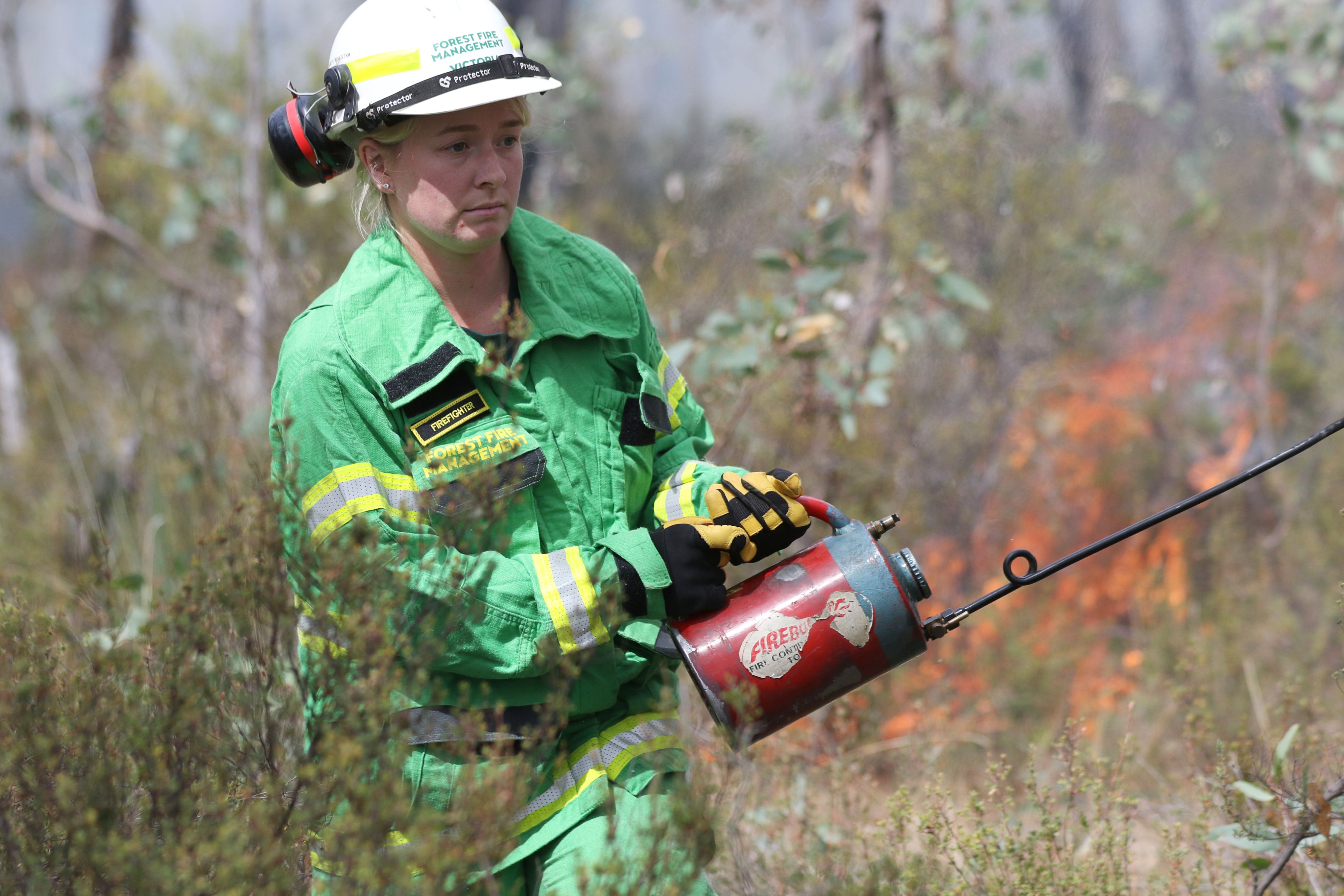Land and fire agencies work with communities to manage bushfire risk across Victoria. This brings together local knowledge and values with world-leading bushfire science.
Planned burning is one of the ways we deliver the goals set out in our Bushfire Management Strategy.
Every planned burn is carefully considered, from initial planning through to post-burn monitoring.
Planning the burn
Before a planned burn can go ahead, we compile detailed information about the burn and the area.
This is called a burn plan and includes information drawn from months to years of planning.
It includes the reason for the burn, the fire history of the area and any cultural sites or habitat to be protected from the fire.
As part of this planning process, we consult with and listen to key stakeholders and communities to understand their needs.
The plan also covers notifications required, the likely impact of smoke on traffic and nearby communities. It also includes maps of the burn area and operational information.
We consult with stakeholders throughout the planning process. These include community members, local councils, Melbourne Water, forest managers, Country Fire Authority (CFA), wineries, tourism industry groups, apiarists, flora and fauna specialists and other parties who register their interest.
Victorians are encouraged to get involved in planning local fire management operations.
Planned burns vary in size and complexity. Simple burns need 20-30 personnel to manage the operation, but others, such as those in high-risk areas, may need more than 70 people.
CFA often provides extra firefighters and equipment to help us, particularly when we do planned burns near towns and settlements.
We use equipment like drip torches to light the burn. We also use four-wheel-drive vehicles with water tanks, large and small tankers, dozers and earthmovers .
At times, we use small or medium-sized helicopters to light a large burn or fixed-wing plane for observation or mapping.
When we use aircraft to help at a burn, we need refuelling crews and an airbase manager.
Before the burn
In the weeks before the burn, we do on-ground preparation of the planned area so it is ready to be ignited when the weather, vegetation and other conditions are right.
Planned burn preparation is essential for the safety of fire crews and to protect environmental and heritage values and the community.
In the days leading up to a burn, trained firefighters finalise the preparation of control lines and natural land features that form an outside edge of the burn.
The officer in charge of the burn makes sure that the correct approvals are in place.
Weather conditions are monitored regularly, and safety checks are carried out.
To prepare, we may rake around trees to protect habitat trees and remove hazardous trees to make the burn safer for fire crews. We may also grade existing roads and tracks to improve access and reduce the risk of the burn escaping. Wildlife safety is also considered as part of these preparations.
On the day of the burn
On the day of the burn, the burn officer checks the weather, wind, fuel moisture and other conditions.
If everything is suitable, the officer requests authorisation. We then notify the public through a range of channels, including social media and the plannedburns.ffm.vic.gov.au
website.
If traffic control is necessary, signs are put in place on local roads and tracks.

At the burn site
Burn officers lead briefings for trained firefighters at the burn site.
These cover the burn tasks, any likely hazards, contingency plans and how will protect important natural or cultural values.
The burn is then lit according to a special lighting plan or pattern to achieve the planned coverage.
Lighting may take three to four hours for a small burn or two or more days for a very large burn.
Ground crews light smaller burns, while helicopters may be used to light larger burns from the air.
After the burn
After the burn, trained firefighters patrol and monitor the area. They put out or remove smouldering material around the edge until the burn is declared safe.
Depending on the size of the burn, this monitoring period may range from a few hours to many months.



